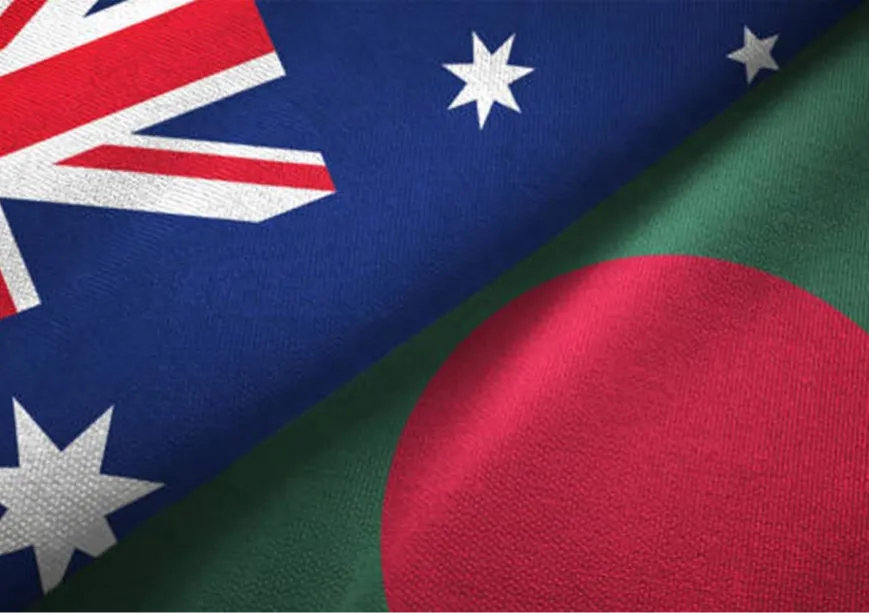
This year Bangladesh and Australia celebrate 50 years of their diplomatic relationship. Looking back upon the time when Bangladesh was still East Pakistan, fighting the war of liberation from its western half, former Australian Prime Minister William McMahon had repeatedly urged the then Pakistan President General Yahya Khan to pursue a negotiation-based political settlement to end the conflict. Subsequently, in 1972, the year after East Pakistan won its freedom, Australia became one of the first countries to recognise Bangladesh as an independent nation. Naturally, these memories are being revisited as the heads of both countries express their goodwill towards each other. Memories generate momentum; therefore, future avenues of collaboration ning diverse sectors such as commerce, defence, and recovery from the pandemic are also being highlighted on the occasion of this golden jubilee. It is interesting to note that the overarching factor guiding all these endeavours is the Indo-Pacific paradigm. Indeed, Prime Minister Sheikh Hasina of Bangladesh has stressed on working towards a peaceful and prosperous Indian Ocean Region while her Australian counterpart, Prime Minister Scott Morrison has reaffirmed their resolve towards ensuring a secure, prosperous, and inclusive Indo-Pacific. The future of Bangladesh–Australia partnership is, therefore, largely tethered to the waves of this geostrategic maritime realm of opportunities and challenges.
Memories generate momentum; therefore, future avenues of collaboration ning diverse sectors such as commerce, defence, and recovery from the pandemic are also being highlighted on the occasion of this golden jubilee.
As a coastal country located at the peak of the triangular Bay of Bengal—the northeast offshoot of the Indian Ocean—the sea is Bangladesh’s primary avenue for protecting its domestic requirements and projecting its interests in the wider Indo-Pacific. Australia situated between the Indian and the Pacific Oceans, is also interested in enhancing its presence in the Indo-Pacific to cater to its economic and security interests. The Bay of Bengal with its important shipping routes is a key transit route between the Indian and the Pacific Oceans and is, thus, critical for Australia’s trade and connectivity. In view of these converging interests, Bangladesh and Australia’s partnership in the maritime domain can be analysed under three categories: Economy, traditional security and non-traditional security. A quick review of these is in order to gauge the potential of their future cooperation.
Economy
The economy of Bangladesh is heavily reliant on the sea. Its seaports transport 94 percent of its foreign trade while marine resources boost the country’s economy as fishing and related activities are a major occupation. Furthermore, the country hosts substantial offshore oil and natural gas reserves which it hopes to explore along with ocean renewable energy.
For Australia, this maritime space apart from being important for trade extends its reach to the markets of South and Southeast Asia. Consequently, the Morrison government has promised to invest 4.8 million dollars to improve Australian resources and mining equipment, technology and services understanding of South Asian markets. Additionally, 5.8 million dollars have also been assigned to promote infrastructure investment opportunities in the region to. Overall, it plans to invest 36.5 million dollars over five years in this maritime space, including 11.4 million dollars to improve regional cooperation on maritime shipping, disaster resilience, and information sharing.
Australia and Bangladesh also signed a Trade and Investment Framework Arrangement which will help boost economic ties and diminish barriers to trade and investment.
Therefore, to anchor its presence in this part of the Indo-Pacific, Australia has sought to engage with the small but important littorals of the Bay, moving beyond cultivating deeper ties only with India. Bangladesh as one of the world’s fastest-growing economies with a remarkable story of poverty reduction and development bears considerable promise. The latter has thus promised to invest 10.2 million dollars to explore new opportunities in the digital sector of Bangladesh and gauge the economic challenges in the region. A further 4.3 million dollars will support relationships across the LNG supply chain between Australia, India, and Bangladesh. In September 2021, Australia and Bangladesh also signed a Trade and Investment Framework Arrangement which will help boost economic ties and diminish barriers to trade and investment. It is an initial step towards reaching a free trade agreement. In a meeting held between the respective foreign ministers in February 2022, there have also been discussions on exploring ways to increase bilateral trade, exporting wool for Bangladesh’s apparel industry, and exploring the scope of cooperation in offshore gas exploration and renewable energy. However, economic endeavours are unlikely to bear fruit unless security is ascertained as well.
Traditional Security
In the northeastern Indian Ocean region, the growing assertive presence of China is a reigning concern amongst the littoral as well as non-littoral stakeholders. China is Bangladesh’s largest trading partner, and it is also a top recipient of China’s FDI. But this small South Asian state is intent on avoiding Sri Lanka’s fate of falling into a debt trap. It is thus keen on strengthening its linkages with middle powers such as Australia, which is already engaged in Bangladesh’s infrastructure and social development, to balance its relation with China. For Australia too, the growing assertive presence of China in the waters of the Bay has raised apprehensions over the stability of this region. This contradicts its strong interest in having a stable and prosperous region with well-governed maritime spaces. The Australian government has thus felt it necessary to design a strategic policy framework by which it will be able to deploy military to shape its environment and deter actions against its interests. Consequently, the Defence Strategic Update released by the Government of Australia in 2020, has identified the ‘north-eastern Indian Ocean’ as one of the country’s ‘immediate region’ for defence planning.
The Defence Strategic Update released by the Government of Australia in 2020, has identified the ‘north-eastern Indian Ocean’ as one of the country’s ‘immediate region’ for defence planning.
Unfortunately, till date Bangladesh–Australia security cooperation remains inadequate. Military visits are rare, and Australia does not provide any material assistance or training to the Bangladesh armed forces. The latter, nonetheless, has flagged its interest in developing a closer security relationship as part of a more comprehensive relationship with Australia. An Australian Defence Advisor is being posted to Dhaka, which should help realise this objective.
Non-traditional security
These challenges refer to those arising from non-state entities such as the environment and criminal activities. Given its geographical locale Bangladesh is vulnerable to natural disasters emanating from the Bay and the effects of climate change. It is has thus sought to engage in collaborations to address these concerns. Bangladesh also suffers significantly from man-made problems such as illegal fishing and illegal migration. On a bilateral basis, Australia plans to help Bangladesh develop disaster and climate resilience as well as extend humanitarian assistance to social cohesion and self-reliance of both Rohingya and local communities. Initiatives for recovery from the pandemic through health responses and nutrition services are also in place. Multilaterally, the Indian Ocean Rim Association, provides a platform to both these countries to jointly address these problems.). Such engagements not only help resolve transnational concerns but also aids in building diplomatic networks, thereby, strengthening the Indo-Pacific region.
It may thus be observed that the Bangladesh–Australia partnership although not one of equally matched capacity is certainly one of shared vision and potentialities. In a conducive strategic climate, there is thus a strong possibility that this half-a-century-old partnership will be able to navigate the waves of the Indo-Pacific for their shared growth.
The views expressed above belong to the author(s). ORF research and analyses now available on Telegram! Click here to access our curated content — blogs, longforms and interviews.




 PREV
PREV


